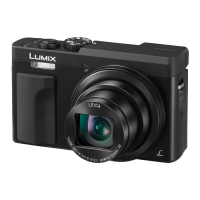



Do you have a question about the Panasonic lumix DC-ZS70 and is the answer not in the manual?
| Effective Pixels | 20.3 Megapixels |
|---|---|
| Dimensions | 112.0 x 67.3 x 41.2 mm |
| Sensor | 1/2.3" High-Sensitivity MOS Sensor |
| Lens | LEICA DC VARIO-ELMAR 30x Optical Zoom Lens |
| Aperture | F3.3 - 6.4 |
| ISO Sensitivity | 80-3200 |
| Image Stabilization | 5-Axis HYBRID O.I.S.+ |
| Display | 3.0-inch TFT Screen LCD (1040K dots) |
| Viewfinder | 0.2-inch LVF (Live View Finder) (1166K dots equivalent) |
| Video Recording | [4K] 3840 x 2160: 30p in MP4; [Full HD] 1920 x 1080 |
| Connectivity | Wi-Fi |
| Battery | Lithium-ion |
| Battery Life | Approx. 380 images (CIPA standard) |
| Weight | Approx. 322 g (including battery and memory card) |
| Shutter Speed | 4 - 1/2000 sec (Mechanical Shutter), 1 - 1/16000 sec (Electronic Shutter) |
Details the names and functions of all the camera's buttons, dials, and other external parts.
Explains the meaning of major messages displayed on the screen and how to respond.
Addresses common issues and provides solutions for troubleshooting camera problems.
Explains the icons used to represent different recording modes on the camera.
Explains the meaning of symbols used within the manual for better understanding.
Guidelines for safely handling the camera to prevent damage and ensure proper operation.
Information on condensation, its causes, and how to deal with it to protect the camera.
Lists the items included with the camera package for initial setup and use.
Instructions on how to attach the hand strap to the camera for secure handling.
Details on how to charge the camera battery, including important notes and indicators.
Step-by-step guide for inserting and removing the memory card from the camera.
Information on compatible memory card types, speed ratings, formatting, and capacity.
Procedure for setting the camera's internal clock and date for accurate recording.
Proper technique for holding the camera to ensure stability and prevent drops.
Instructions on how to adjust the monitor's angle for comfortable viewing and shooting.
Detailed explanation of camera controls used for various recording operations and functions.
Explains how to use the camera's touch screen interface for various operations like touch, drag, and pinch.
Guide to navigating and using the camera's menu system for settings and functions.
How to access and use the Quick Menu for rapid access to frequently used settings.
Instructions on customizing function buttons to assign frequently used camera functions.
Guide to entering text for various settings like names, locations, and titles.
How to use the camera in Intelligent Auto mode for point-and-shoot convenience.
Instructions for taking self-portraits using the Self Shot mode and tilting the monitor.
Using Program AE mode to automatically set exposure for balanced pictures.
How to control depth of field by setting the aperture value in Aperture-Priority AE mode.
Controlling motion blur and capturing fast action by setting the shutter speed in Shutter-Priority AE mode.
Manually controlling aperture and shutter speed for full exposure control in Manual Exposure mode.
Guide to creating panoramic images by panning the camera in Panorama Shot Mode.
Using Scene Guide Mode to let the camera optimize settings for specific shooting situations.
Applying various creative picture effects and filters to enhance photos in Creative Control Mode.
How to use the camera's autofocus system for sharp and well-focused images.
Techniques for capturing detailed close-up shots of subjects, including macro focus options.
Using manual focus for precise control over focus, especially in challenging lighting or macro shots.
How to lock focus and exposure settings to maintain composition and exposure consistency.
Adjusting exposure settings to compensate for backlighting or overly bright/dark subjects.
Adjusting ISO sensitivity to control image brightness and noise in different lighting conditions.
Correcting color casts caused by different light sources for accurate color representation.
Capturing high-speed 4K bursts and selecting individual frames to save as photos.
Adjusting focus points after capture or combining multiple focus points into one image.
Choosing shooting modes like single shot, burst, 4K Photo, Post Focus, or self-timer.
Using the self-timer function for delayed shooting to prevent camera shake or include oneself.
Automatically taking multiple shots with different exposure or white balance settings.
Setting up automatic interval shooting for capturing gradual changes over time.
Stitching sequential still pictures to create stop motion animations.
Using the camera's stabilizer function to reduce image blur from camera shake.
Explains optical zoom, extended optical zoom, and i.Zoom features for adjusting magnification.
Guide to changing flash modes, using flash effectively, and understanding flash settings.
Instructions for recording high-definition AVCHD and MP4 motion pictures, including 4K.
Configuring video settings like AVCHD/MP4 format, resolution, frame rate, and bit rate.
Using continuous autofocus to maintain focus during motion picture recording.
Cropping 4K footage to create panning and zooming effects while keeping the camera stationary.
Capturing still photos during motion picture recording, including limitations and settings.
Creating short motion clips with specified recording times and effects like fade-in/out.
How to select and view still pictures from the camera's memory using the playback controls.
Instructions for playing back recorded motion pictures, including playback controls and operations.
Extracting individual still frames from recorded motion pictures for use as separate photos.
Changing how pictures are displayed during playback, like zoom, multi-view, or calendar view.
How to play back pictures that have been grouped together, either consecutively or one by one.
Procedure for deleting individual or multiple pictures, with warnings about unrecoverable data.
An overview of all menu categories and their respective page numbers for easy navigation.
Adjusting colors and picture quality with preset styles like Standard, Vivid, Natural, and Monochrome.
Fine-tuning picture quality settings such as contrast, sharpness, noise reduction, and color tone.
Applying various picture effects (filters) to images in different shooting modes.
Selecting the aspect ratio of pictures to suit printing or playback needs (4:3, 3:2, 16:9, 1:1).
Choosing the pixel resolution for still pictures to balance detail and file size.
Setting the compression rate for JPEG files or selecting RAW file format for maximum flexibility.
Selecting the method for measuring scene brightness for accurate exposure.
Automatically adjusting contrast and exposure for lifelike colors in high-contrast scenes.
Enhancing outlines and clarity of pictures using Intelligent Resolution technology.
Combining multiple exposures to create a single HDR image with rich gradation and detail.
Selecting between mechanical and electronic shutters for different shooting scenarios.
Automatically detecting and correcting red-eye in flash photography.
Setting the maximum ISO sensitivity limit for AUTO or manual ISO settings.
Enabling face recognition to automatically adjust focus and exposure for prioritized subjects.
Disabling operational sounds like beeps and flash for discreet shooting.
Overview of the Wi-Fi capabilities, including smartphone connection, TV display, and web services.
Instructions for connecting the camera to a smartphone for remote operation and image transfer.
Easy setup for direct Wi-Fi connection to a smartphone without needing a password.
Strengthening Wi-Fi security using manual password input or QR code for authentication.
Methods for sending pictures to smartphones, PCs, AV devices, printers, and web services.
Transferring still pictures and motion pictures from the camera to a smartphone via Wi-Fi.
Printing recorded still pictures wirelessly from a PictBridge-compatible printer.
Transferring still and motion pictures to home AV devices like DLNA recorders.
Steps to send still and motion pictures from the camera to a computer.
Uploading pictures to social networking services or cloud storage via LUMIX CLUB.
Guide to registering a WEB service account with LUMIX CLUB for image synchronization.
Viewing 4K motion pictures on a TV or PC, and transferring them to other devices.
Copying pictures and videos from the camera to a computer for backup and editing.
Information on downloading and installing necessary software like PHOTOfunSTUDIO and SILKYPIX.
Steps for copying files to a computer using PHOTOfunSTUDIO or manually via USB.
Dubbing content from the camera's memory card to a Blu-ray Disc or DVD using a Panasonic recorder.
Instructions for connecting to a PictBridge printer and printing selected pictures.
Setting up and printing multiple pictures at once, including selecting print sets and favorites.
Information on accessories that can be purchased separately for enhanced camera functionality.
Details the various icons and information displayed on the camera's monitor and viewfinder.
Explains the meaning of major messages displayed on the screen and how to respond.
Addresses common issues and provides solutions for troubleshooting camera problems.
Important precautions and guidelines for safe and proper use, care, and maintenance of the camera.
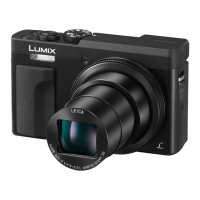
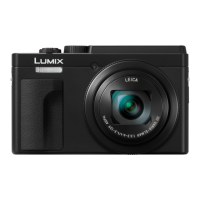

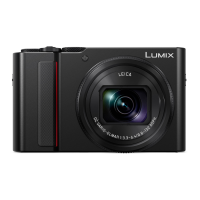
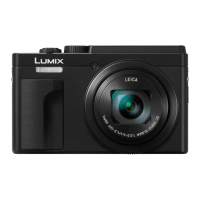
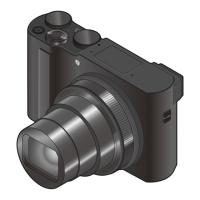
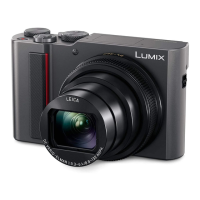
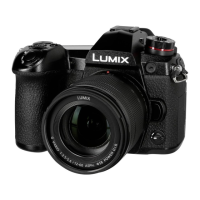

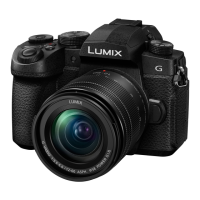
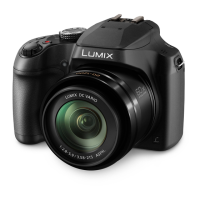
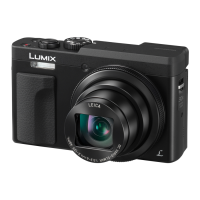
